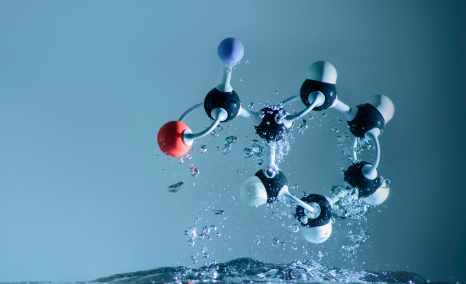Soft Tissue Sarcoma: A rare malignancy
Mar 06, 2020
Table of Contents
What does a yellow ribbon signify? It symbolizes support for Sarcoma patients. Sarcoma – an umbrella term for several forms of cancer that occur in muscles or bones – is a rare form of cancer. There exist more than 70 types of sarcomas – mostly considered rare – classified on the basis of the type of tissue they affect, broadly categorized as soft tissue sarcoma and bone sarcoma.
However, Soft tissue sarcoma (STS) is the most frequently occurring sarcomas of all. Invading connective tissue such as muscles, fatty tissues, bones, cartilage, and blood vessels, Soft tissue sarcoma, a rare sarcoma – is often difficult to diagnose, notable due to no visible symptoms at early stages. However, with an increase in the propensity of cancer, the patient begins to experience pain and a lump of mass at the origin of the soft tissue sarcoma.
Downloads
Article in PDF
Recent Articles
- Soft Tissue Sarcoma Market size to increase with a CAGR of 6.47% – Emerging therapies and Increas...
- Daiichi Sankyo’s Intravenous Iron Replacement Therapy; ANeuroTech’s Adjunctive Anti-depression Dr...
- Booming Healthcare sector in MENA: Lucrative opportunity for Global pharma players
- FDA declines the approval of Lipocine’s testosterone drug; Novartis Sandoz to buy Aspen Pharmaca...
- Notizia
Soft Tissue Sarcoma Epidemiology
In the year 2017, the total Soft tissue sarcoma incident population in the 7MM was observed to be approximately 40,155 – estimated DelveInsight. Moreover, the US accounted for the maximum number of STS incidence case, followed by Germany, with Spain accounting for least Soft tissue sarcoma incidence.
Gender-specific STS epidemiology
Accounting for less than 1-2 % of all the cancers, Soft tissue sarcoma is deadly cancer with a predominant preponderance in males as compared to in females, with a total of 9,925 male and 7,555 female Soft tissue sarcoma diagnosed cases in 2017 in the United States, as observed by DelveInsight.
Moreover, estimates by the American Cancer Society revealed around 13,130 new diagnosed cases for 2020 (7,470 in males and 5,660 in females), and 5,350 deaths (2,870 males and 2,480 females) due to soft tissue sarcoma.
Type-specific STS Epidemiology
In terms of types of Soft tissue sarcoma, in the United States, there were 2,961 cases of Leiomyosarcoma, followed by Fibroblastic sarcomas, LPS, and synovial sarcoma. Among the above-mentioned types, epithelioid sarcoma and clear cell sarcoma has the least number of the patient pool, i.e., 0.50%, of the overall STS patients in the country in 2017.
Age-specific Soft tissue Sarcoma Epidemiology
As per DelveInsight’s analysis, a maximum number of cases were of age 55 or older in 2017. Soft tissue sarcoma patients ranging from age group 21 to 54 years were reported to be the second-highest.
Stage-specific Soft tissue Sarcoma Epidemiology
According to DelveInsight’s analysts, localized soft tissue sarcoma accounted for almost 60% of the overall STS cases in 2017. In the US, there were 7,434 cases of localized type, 2,354 cases of regional type, 1,859 cases of regional type, and 743 cases of an unknown type of soft tissue sarcoma, estimated DelveInsight.
Moreover, as per the analysis done by SEER for the period of 2009-15, 81% of the people diagnosed with localized soft tissue sarcoma had 5-year relative survival rate. On the other hand, the rate with regional, and distant STS was 57% and 16% respectively.
Extremity-specific Soft tissue Sarcoma Epidemiology
Soft tissue sarcoma on the basis of extremities – upper and lower – accounted for 5,699 and 1,859 cases respectively in the US in 2017.
DelveInsight estimates that Increasing Soft tissue sarcoma incidence would certainly fuel the Soft tissue sarcoma therapy market, as the current STS therapies are palliative in nature.
Soft tissue Sarcoma Treatment approaches
Rare, and heterogenous, Soft tissue sarcomas are relatively hard to diagnose cane be treated via surgery, chemotherapy, radiation therapy, or a combination of these therapies. Moreover, Soft tissue sarcoma treatment options for patients with advanced STS have historically been limited; cytotoxic chemotherapy has been the mainstay of therapy for decades. Active drugs include doxorubicin, ifosfamide, gemcitabine, taxanes, and several others; these may be administered either as single agents or in combination regimens.
Combination therapy of doxorubicin and ifosfamideis is the most commonly administered regimen. The combination has shown significantly a higher rate of objective response induction as compared to single-agent doxorubicin,
The most commonly used regimen is the combination of doxorubicin and ifosfamide. From randomized trials performed in the advanced/metastatic setting of soft tissue sarcoma, such a combination is known to be associated with a significantly higher rate of objective response induction as compared to single-agent doxorubicin.
Whichever therapy is present in the Soft tissue sarcoma therapy market, they are palliative in nature. However, past years have witnessed a surge in the clinical trials and therapy approaches revolving around chemotherapy, and newer agents including olaratumab, trabectedin, pazopanib, which have suggested that such an approach would down-size the tumor in the preoperative setting, improving overall survival. The intent of these treatments is palliative for the majority of patients. The FDA approval of Votrient (pazopanib) in 2012 for second-line treatment of advanced soft tissue sarcoma gave a kick start to soft tissue sarcoma treatment market, encouraging other pharma and biotech companies to advance Soft tissue sarcoma therapy market. Key Soft tissue sarcoma companies working in the field including Eli Lilly, Novartis, GSK, Bayer, Blueprint Medicines Corporation, Advenchen Laboratories/Jiangsu Chia-Tai Tianqing Pharmaceutical, Karyopharm Therapeutics, Deciphera Pharmaceuticals, Philogen, Epizyme, Pfizer, Aadi Bioscience, and many others are developing novel therapies to treat soft tissue sarcoma.
Downloads
Article in PDF



